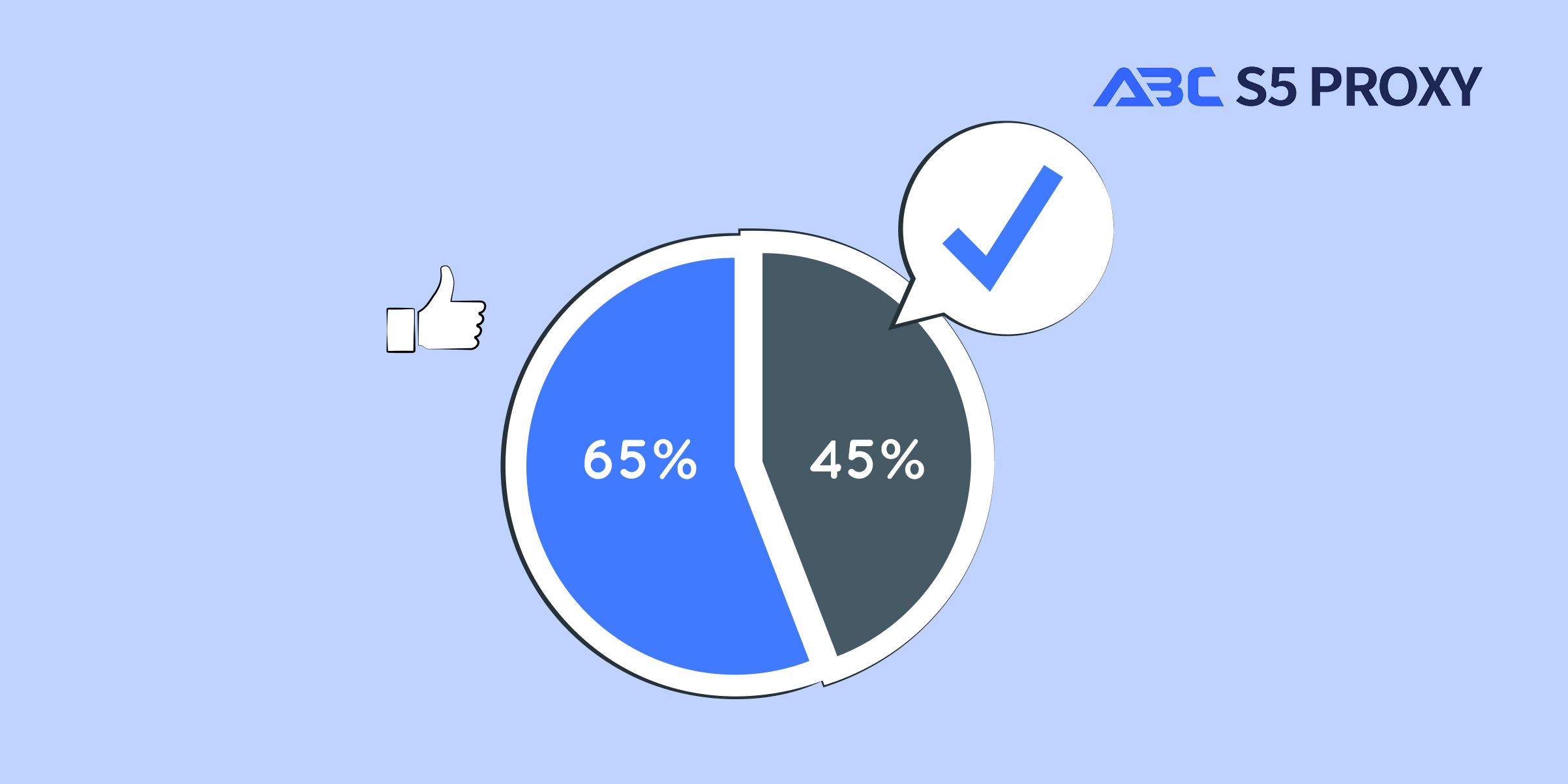Residential Proxies
Allowlisted 200M+ IPs from real ISP. Managed/obtained proxies via dashboard.

Proxies Services
Residential Proxies
Allowlisted 200M+ IPs from real ISP. Managed/obtained proxies via dashboard.
Residential (Socks5) Proxies
Over 200 million real IPs in 190+ locations,
Unlimited Residential Proxies
Unlimited use of IP and Traffic, AI Intelligent Rotating Residential Proxies
Static Residential proxies
Long-lasting dedicated proxy, non-rotating residential proxy
Dedicated Datacenter Proxies
Use stable, fast, and furious 700K+ datacenter IPs worldwide.
Mobile Proxies
Dive into a 10M+ ethically-sourced mobile lP pool with 160+ locations and 700+ ASNs.
Scrapers
Collection of public structured data from all websites
Proxies
Residential Proxies
Allowlisted 200M+ IPs from real ISP. Managed/obtained proxies via dashboard.
Starts from
$0.6/ GB
Residential (Socks5) Proxies
Over 200 million real IPs in 190+ locations,
Starts from
$0.03/ IP
Unlimited Residential Proxies
Unlimited use of IP and Traffic, AI Intelligent Rotating Residential Proxies
Starts from
$1816/ MONTH
Rotating ISP Proxies
ABCProxy's Rotating ISP Proxies guarantee long session time.
Starts from
$0.4/ GB
Static Residential proxies
Long-lasting dedicated proxy, non-rotating residential proxy
Starts from
$4.5/MONTH
Dedicated Datacenter Proxies
Use stable, fast, and furious 700K+ datacenter IPs worldwide.
Starts from
$4.5/MONTH
Mobile Proxies
Allowlisted 200M+ IPs from real ISP. Managed/obtained proxies via dashboard.
Starts from
$1.2/ GB
Scrapers
Web Unblocker
Simulate real user behavior to over-come anti-bot detection
Starts from
$1.2/GB
Serp API
Get real-time search engine data With SERP API
Starts from
$0.3/1K results
Scraping Browser
Scale scraping browsers with built-inunblocking and hosting
Starts from
$2.5/GB
Documentation
All features, parameters, and integration details, backed by code samples in every coding language.
TOOLS
Resources
Addons
ABCProxy Extension for Chrome
Free Chrome proxy manager extension that works with any proxy provider.
ABCProxy Extension for Firefox
Free Firefox proxy manager extension that works with any proxy provider.
Proxy Manager
Manage all proxies using APM interface
Proxy Checker
Free online proxy checker analyzing health, type, and country.
Proxies
AI Developmen
Acquire large-scale multimodal web data for machine learning
Sales & E-commerce
Collect pricing data on every product acrossthe web to get and maintain a competitive advantage
Threat Intelligence
Get real-time data and access multiple geo-locations around the world.
Copyright Infringement Monitoring
Find and gather all the evidence to stop copyright infringements.
Social Media for Marketing
Dominate your industry space on social media with smarter campaigns, anticipate the next big trends
Travel Fare Aggregation
Get real-time data and access multiple geo-locations around the world.
By Use Case
English
繁體中文
Русский
Indonesia
Português
Español
بالعربية

Title: A Comparative Analysis of Websockets and HTTP
In the world of web development, two popular communication protocols stand out - Websockets and HTTP. Both play crucial roles in enabling communication between clients and servers, yet they serve different purposes and have distinct features. In this blog post, we will explore the differences between Websockets and HTTP, their strengths and weaknesses, and the scenarios in which each protocol excels.
HTTP, or Hypertext Transfer Protocol, is the foundation of data communication on the World Wide Web. It is a stateless protocol that enables the transfer of hypertext, images, videos, and other files between clients and servers. HTTP follows a request-response model, where a client sends a request to the server, and the server responds with the requested data.
On the other hand, Websockets provide a full-duplex communication channel over a single, long-lived connection. Unlike HTTP, which follows a request-response model, Websockets allow for bi-directional communication between clients and servers. This real-time communication capability makes Websockets ideal for applications that require instant updates, such as chat applications, online gaming, and financial trading platforms.
1. Real-time Communication: Websockets excel in scenarios where real-time data updates are required. With Websockets, servers can push data to clients instantly, eliminating the need for clients to repeatedly poll the server for updates.
2. Reduced Latency: By maintaining a persistent connection, Websockets reduce the latency associated with establishing new connections for each request. This results in faster data transfer and improved user experience.
3. Bi-directional Communication: Websockets enable seamless bi-directional communication, allowing both clients and servers to send data at any time without waiting for a request.
1. Connection Overhead: Maintaining a persistent connection can lead to higher resource consumption on both the client and server sides. This overhead may not be suitable for applications with a large number of concurrent connections.
2. Firewall and Proxy Limitations: Some network configurations may block Websocket connections, leading to compatibility issues in certain environments.
1. Compatibility: HTTP is widely supported by web browsers and servers, making it a universal protocol for web communication. It is the standard protocol for fetching web pages, images, and other resources.
2. Caching: HTTP supports caching mechanisms that help reduce server load and improve performance by storing frequently accessed resources locally on the client side.
3. Stateless Nature: The stateless nature of HTTP simplifies server-side implementation and scalability, as each request is independent and does not rely on previous requests.
1. High Latency: The request-response nature of HTTP can lead to higher latency for real-time applications that require frequent updates.
2. Polling Overhead: In scenarios where real-time updates are needed, polling the server at regular intervals can lead to increased network traffic and server load.
In conclusion, both Websockets and HTTP have their strengths and weaknesses, making them suitable for different types of applications. Websockets excel in real-time communication scenarios where instant updates are crucial, while HTTP remains a reliable choice for traditional web applications that do not require real-time interactions. Ultimately, the choice between Websockets and HTTP depends on the specific requirements of the application and the desired user experience. Developers should carefully evaluate the pros and cons of each protocol to determine the best fit for their projects.
Featured Posts
Popular Products
Residential Proxies
Allowlisted 200M+ IPs from real ISP. Managed/obtained proxies via dashboard.
Residential (Socks5) Proxies
Over 200 million real IPs in 190+ locations,
Unlimited Residential Proxies
Use stable, fast, and furious 700K+ datacenter IPs worldwide.
Rotating ISP Proxies
ABCProxy's Rotating ISP Proxies guarantee long session time.
Residential (Socks5) Proxies
Long-lasting dedicated proxy, non-rotating residential proxy
Dedicated Datacenter Proxies
Use stable, fast, and furious 700K+ datacenter IPs worldwide.
Web Unblocker
View content as a real user with the help of ABC proxy's dynamic fingerprinting technology.
Related articles

A Comparative Analysis of Websockets and HTTP
Title: A Comparison of WebSocket and HTTP ProtocolsWebSocket and HTTP are two common protocols used in web development, each serving different purposes and offering unique features. In this blog post, we will explore the differences between WebSocket and HTTP protocols.WebSocket is a communication protocol that provides full-duplex communication channels over a single TCP connection. This allows for real-time data transfer between a client and a server, making it ideal for applications that require low latency and high-speed data exchange, such as online gaming, chat applications, and live streaming.On the other hand, HTTP (Hypertext Transfer Protocol) is the foundation of data communication on the World Wide Web. It is a request-response protocol that is used for fetching resources from a server, such as web pages, images, and videos. While HTTP is widely used for loading web pages and transferring files, it is not suitable for real-time communication due to its limitations in maintai

How to Evaluate IP Quality Score
Title: Understanding the Importance of IP Quality Score in Online SecurityIn the digital age, the concept of IP quality score plays a crucial role in ensuring online security and protecting against malicious activities. An IP quality score is a numeric value assigned to an IP address based on various factors such as reputation, behavior, and history of the IP address.Having a high IP quality score indicates that the IP address is trustworthy and has a good reputation, while a low score may suggest that the IP address is associated with spamming, phishing, or other fraudulent activities. Online platforms and services use IP quality scores to identify and block potentially harmful IP addresses, thereby safeguarding their users and maintaining a secure online environment.Businesses and organizations can also benefit from monitoring and optimizing their IP quality score to protect their online assets, reputation, and customer data. By understanding and prioritizing IP quality scores, they

The Ultimate Guide to the Best Discord Servers for ABCProxy Users
Title: Exploring the Best Discord Servers: A Closer Look at ABCProxyDiscord has become a popular platform for communities to come together, share interests, and connect with like-minded individuals. Among the multitude of Discord servers available, ABCProxy stands out as one of the best for those seeking a unique and engaging experience.ABCProxy offers a wide range of features and services that cater to different interests and preferences. From gaming communities to creative hubs, there is something for everyone on this versatile server. The community is welcoming and active, with members always ready to engage in lively discussions and share valuable insights.One of the key highlights of ABCProxy is its focus on providing a secure and reliable environment for its users. With dedicated moderators and strict rules in place, the server maintains a respectful and inclusive atmosphere where everyone feels safe and valued.In addition to its strong community and security measures, ABCProxy a